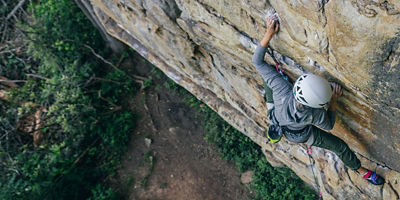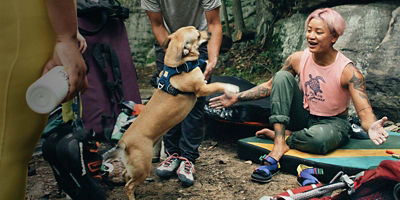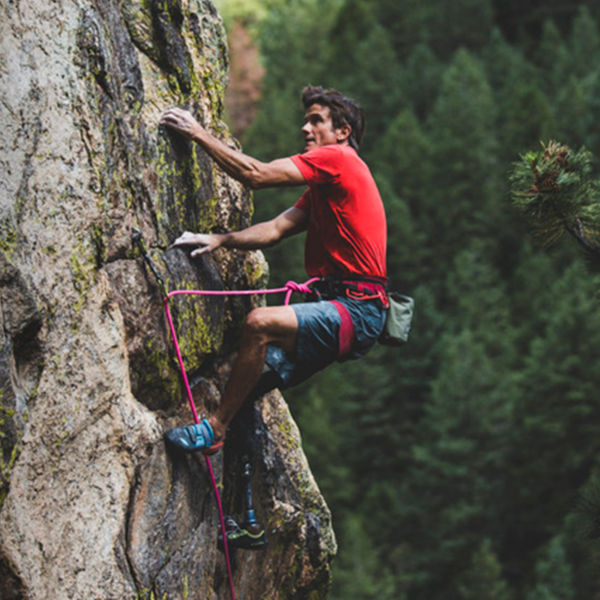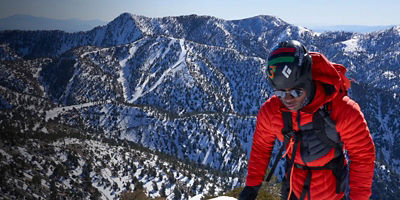
Strength matters in climbing, but the truth is that good technique, not big muscles, is often the secret to success on harder routes. The foundation of good technique? Footwork.
Footwork is critical because no matter how jacked your biceps are, your legs will always be stronger. The best way to climb harder is to learn how to use them. With proper rock climbing footwork, you’ll be able to shift your balance seamlessly, pull your center of gravity closer to the wall to take the strain off your arms, and leverage powerful leg muscles to reach higher with less effort. The result: Faster, smarter, more efficient climbing.
Use these tips to master good footwork.
1. Move Your Feet First
When you’re starting out, it can be tempting to focus on your hands as you grab for one hold after another. But if your feet aren’t keeping pace, it won’t be long before you find yourself doing one-armed pull ups and running out of steam. Instead, practice looking down. Move your feet one at a time before you move your hands.
2. Step With Your Toes
Good rock climbing footwork is all about finding ways to maximize your reach. The best way to do that? Stand on your tiptoes. Even on big footholds, avoid placing your whole foot on the hold. Instead, step with the inside of your big toe, a sweet spot that will help you maintain precision and maximize reach while keeping your hips—your center of gravity—close to the wall.
3. Keep Quiet Feet
Every second you spend scooting or shuffling your feet is a second spent hanging from your arms with the fatigue clock ticking. To maximize your efficiency, practice placing your toes exactly where you want them the first time. (Bonus: This will also make your climbing shoes last longer.) When you hear scuffling or scraping, think of it as a reminder to focus.






















